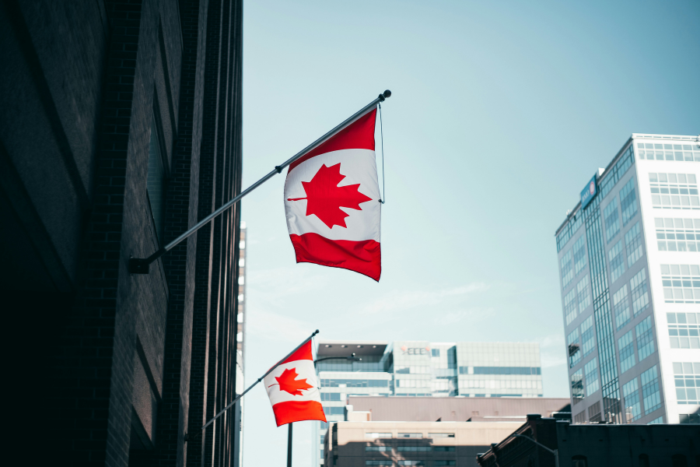Expatriation Tax Planning for Citizens Leaving Canada
March 21, 2025
For many people, leaving Canada for good holds out the promise of a lifetime of adventure – but the biggest shock could happen before they ever set foot on a plane.
That’s because many will encounter the Canadian departure tax for the first time, and for quite a few people, the tax, which arrives with a shockingly high price tag, will be the biggest tax event of their lives.
Often ignored or underestimated until it’s too late, the departure tax isn’t a mere bureaucratic footnote that will shrink to a speck in the rearview mirror and ultimately disappear.
Quite the reverse – think of it instead as being more like a full-scale financial reckoning. Reminiscent of the US exit tax, the Canadian version is based on a ‘deemed disposition’ of your assets.
But be warned; the Canadian government will essentially treat you as though you’ve sold everything you own – real estate, business, stocks, kitchen sink – the day before you leave. It doesn’t matter whether you’ve sold it or not – ‘deemed disposition’ means you’re taxed as if you have.
And no, you can’t opt out. The departure tax is hardwired into Canadian tax law and applies to anyone severing their residential ties. News of the tax and its unyielding implementation has come as a shock to many aspiring expats.
Fortunately, there is a silver lining to this particular fiscal storm cloud. With careful planning, you can legally reduce, defer or even avoid this tax.
To help you consider your options, the Nomad Capitalist team has put together this in-depth report on one of Canada’s least-known but financially perilous tax laws.
We’re not lawyers, so we always advise people to seek independent legal advice, but one thing we’re clear about – if you’re planning to leave Canada, this is one tax event you can’t afford to ignore.
Understanding Canadian Tax Residency

Understanding the departure tax, means understanding the core concept of tax residency in Canada as tax residency is the status that dictates whether you’re subject to Canadian exit taxes.
Determining Residency Status
The Canada Revenue Agency (CRA) doesn’t have a simple checklist to determine your tax residency. Instead, it’s a fact-based assessment that looks at your ties to Canada.
It considers two main categories to help determine your tax residency status.
The first status, called ‘significant residential ties’, involves you having a home in Canada, a spouse or common-law partner and dependents living in Canada. Having any of these usually means you’re considered a resident for tax purposes.
‘Secondary residential ties’ are less impactful individually, but collectively they matter. Here, your status relies on having Canadian bank accounts, a Canadian driver’s license, Canadian credit cards, memberships in Canadian organisations and maintaining a Canadian mailing address.
The general rule is that if you have significant residential ties, you’re likely a Canadian tax resident.
However, it’s not the sole determining factor. The CRA also considers the length and frequency of your stays in Canada and your intentions. Therefore, if you’re making a life else where, you might be considered a non-resident.
Becoming a Non-Resident
Leaving Canada for good involves more than just packing your bags.
There are two options: becoming a non-resident for tax purposes or renouncing your citizenship.
The CRA has specific rules you’ll need to follow to officially cease your tax residency.
According to them, to become a non-resident without renouncing, you must show that you intend to cut ties with Canada. This could involve:
- Selling or renting out your Canadian home
- Moving your spouse/partner and dependents with you
- Closing your Canadian bank accounts and cancelling Canadian credit cards
- Notifying the CRA of your departure date and change of residency status.
To become a non-resident of Canada for tax purposes, you must also be an actual resident or citizen of another country. You can’t be ‘stateless’ for tax purposes.
You need to be able to demonstrate that you’ve set up a new centre of vital interests – a new home, new connections and a new primary place of life elsewhere.
The Canadian Departure Tax
As a departing Canadian resident, you should be prepared for the exit tax.
The Canadian departure tax, or exit tax, isn’t a tax on leaving the country, per se. It’s a tax triggered by the deemed disposition of your assets when you cease to be a Canadian resident for tax purposes.
In a nutshell, the CRA treats you as if you sold almost all of your worldwide assets at their fair market value immediately before you became a non-resident.
Any resulting capital gains are then subject to Canadian income tax.
Which Assets are Subject to Departure Tax?
The deemed disposition rules apply to a wide range of assets you own, both inside and outside Canada.
This includes, but isn’t limited to:
- Stocks and bonds (held outside registered accounts)
- Mutual funds and ETFs (held outside registered accounts)
- Cryptocurrency
- Real estate (with an important exception – see below)
- Interests in partnerships
- Shares in private corporations
- Personal property (like artwork or collectables) worth over CAD$10,000.
There are some exceptions. Canadian real estate is not considered to be sold when you leave, but it will still be taxed in Canada when you sell it later.
Registered Retirement Savings Plans (RRSPs) and Tax-Free Savings Accounts (TFSAs) are usually not taxed when you leave, but they will be once you make a withdrawal.
Calculating the Departure Tax Canada
To calculate the departure tax, you need to subtract the deemed profits for each asset you sold from its adjusted cost base (ACB). The deemed proceeds are generally the fair market value of the asset on the day you cease to be a Canadian resident.
The ACB is usually your original purchase price, plus any eligible expenses (like commissions) and capital improvements. The difference between these two figures is your capital gain (or loss).
The good news is that the first CAD$100,000 is exempt from taxation.
To illustrate how this works, say you bought shares for CAD$200,000 (ACB). On the day you become a non-resident, they’re worth CAD$350,000 (fair market value). Your capital gain is CAD$150,000. This means only CAD$50,000 is included in your taxable income.
Reporting the Departure Tax
Reporting the departure tax is the final step in gaining freedom from the Canadian tax system.
You’ll need to file specific forms with your final tax return:
- Form T1161: This form lists all properties owned on the date you left Canada.
- Form T1243: This form is used to calculate the capital gains (or losses) on the deemed disposition of your assets.
- Form T1244: This form is used if you plan to defer payment of tax on income relating to the deemed disposition of property.
These forms must be filed by the regular tax filing deadline (usually April 30 of the following year) for the year in which you became a non-resident.
Strategies to Minimise Departure Tax
While the departure tax is a significant consideration, it’s not an insurmountable obstacle. Proactive planning can greatly reduce its impact.
Carefully timing your departure can minimise the portion of that year’s income subject to Canadian tax rates. You could also sell your primary residence before you go, as this is exempt from capital gains tax.
Another possibility, in certain circumstances, is to elect to defer the payment of the departure tax. This can be useful if you anticipate a lower income in future years.
Aside from that, you may transfer assets to your spouse, which might lower the initial hit, but those assets will still be liable to Canadian tax at some point.
The last strategy involves selling any assets that are at a loss before your departure. This is a harsh way to lower your tax burden, but it’s worth it if you’re very wealthy and want to bring the exit tax down.
Canadian Tax Obligations for Non-Residents

Becoming a non-resident doesn’t entirely sever your tax ties with Canada. Certain types of income remain taxable, and you might have ongoing reporting requirements.
Even as a non-resident, you’re still subject to tax on any Canadian-source income. This includes rent from Canadian properties, dividends from Canadian corporations and certain types of employment income earned in Canada.
All Canadian-source income is generally subject to a withholding tax. The standard rate is 25%, but it can be lower under tax treaties between Canada and your new country of residence.
A foreign corporation that does not operate in Canada and meets the requirements of a Canadian tax treaty can submit a ‘treaty-based’ corporate tax return to reclaim the taxes withheld under Regulation 105.
You’ll still need to file a Canadian tax return if you receive Canadian-source income subject to withholding tax or if you have a capital gain from selling ‘taxable Canadian property’. This is to report the income and see to it that the correct amount of tax was withheld.
When a non-resident sells Canadian real estate, there are specific tax implications. While not subject to departure tax, gains are subject to Canadian capital gains tax. A significant withholding tax (typically 15% of the gross selling price) is required, which can be later adjusted when you file a Canadian tax return.
While not subject to departure tax, withdrawals from RRSPs and RRIFs after becoming a non-resident are subject to Canadian withholding tax. However, similar to other income types, this may be reduced by a tax treaty.
Canadian Tax Treaties and Avoiding Double Taxation
Tax treaties between Canada and other countries help to protect your income and often offer ways to lower your taxable income.
Tax treaties are agreements between two countries that determine which country has the right to tax specific types of income. Their primary purpose is to prevent double taxation and to facilitate international trade and investment.
On top of that, they define rules for allocating taxing rights and often reduce or eliminate withholding tax rates.
To your advantage, good ‘ole Canada has treaties with many countries.
These tax treaties often override Canadian domestic tax law. A treaty might lower the Canadian withholding tax on certain income (like dividends, interest or royalties) or even remove it completely.
To claim benefits under a tax treaty, you’ll need to indicate this on your Canadian tax return. Think of it as politely informing the CRA, ‘Hey, I know the usual rules, but this treaty changes things’.
You’ll generally need to disclose your residency status in your new country and identify the specific article of the treaty that applies to your situation.
Filing proper documentation is key, as the CRA won’t just take your word for it. Otherwise, you may face double taxation.
Double taxation is the tax equivalent of being hit by two buses. Canada, like most countries, wants to avoid this scenario, hence the network of tax treaties. The goal is fair taxation, not double jeopardy.
Expatriation Tax Planning for Citizens Leaving Canada: FAQs
The Canadian exit tax, also known as the departure tax, is a tax on the assumed sale of all your assets upon your departure as a Canadian taxpayer.
Canadian expats who are non-residents for tax purposes are generally only taxed on their Canadian-source income. This includes things like rental income from Canadian properties and dividends from Canadian companies, but not personal income that comes from other countries.
CRA non-resident status means you’ve severed significant residential ties with Canada and are no longer considered a resident for tax purposes. Your income is no longer taxed by Canada.
Double taxation is avoided through tax treaties between Canada and other countries. These treaties determine which country has the primary right to tax specific types of income, preventing you from paying tax twice.
Withholding tax is a tax taken from certain types of income from Canada that are paid to people who are not Canadian citizens. These types of income include dividends and interest. The standard rate is 25%, but treaties may reduce it.
Make the Right Choice for Your Tax Obligations

The Canadian departure tax and the ongoing tax obligations of non-residents can come as a seismic shock to the unsuspecting.
But for both those who are or aren’t aware of it, the tax can be complicated.
While this guide provides a detailed overview, it’s no substitute for personalised advice. The stakes are simply too high to try to manage this process alone.
The cross-border tax and global citizenship specialists on our team at Nomad Capitalist can assess your circumstances and find the best ways to minimise your tax burden. Think of it as an investment in your peace of mind and your long-term financial well-being as you head out on your journey.
Don’t leave your financial future to chance. Take control, plan ahead and secure your financial freedom with the help of Nomad Capitalist.



Property Tax in Malta: Stamp Duty, Rental Income Tax, and More
Long-term property ownership is significantly more cost-effective in Malta than in most EU countries. While Malta imposes transactional taxes and unique taxation schemes, you will not incur traditional annual taxes after buying a property. In this guide, we’ll go over Malta’s unique property tax landscape to help you understand your obligations. We’ll cover: Does Malta […]
Read more

UK Inheritance Tax for Expats Living in Malta: Scope, Exemptions, and More
If you’re a UK expat who has resided in Malta for a considerable amount of time and are currently focused on estate planning, you may encounter a potentially complex tax scenario. You need to consider both the UK’s inheritance tax (IHT) and Malta’s taxation regulations, after which you should devise a tax-efficient strategy that maximizes […]
Read more

How To Open a Bank Account in Portugal in 5 Steps
Whether you’re preparing to relocate to Portugal or wish to conduct business in the country, opening a bank account is among the first steps you’ll need to take. Although the process is typically straightforward, there are some considerations to keep in mind before committing to any bank. In this guide, we’ll explain how to open […]
Read more




